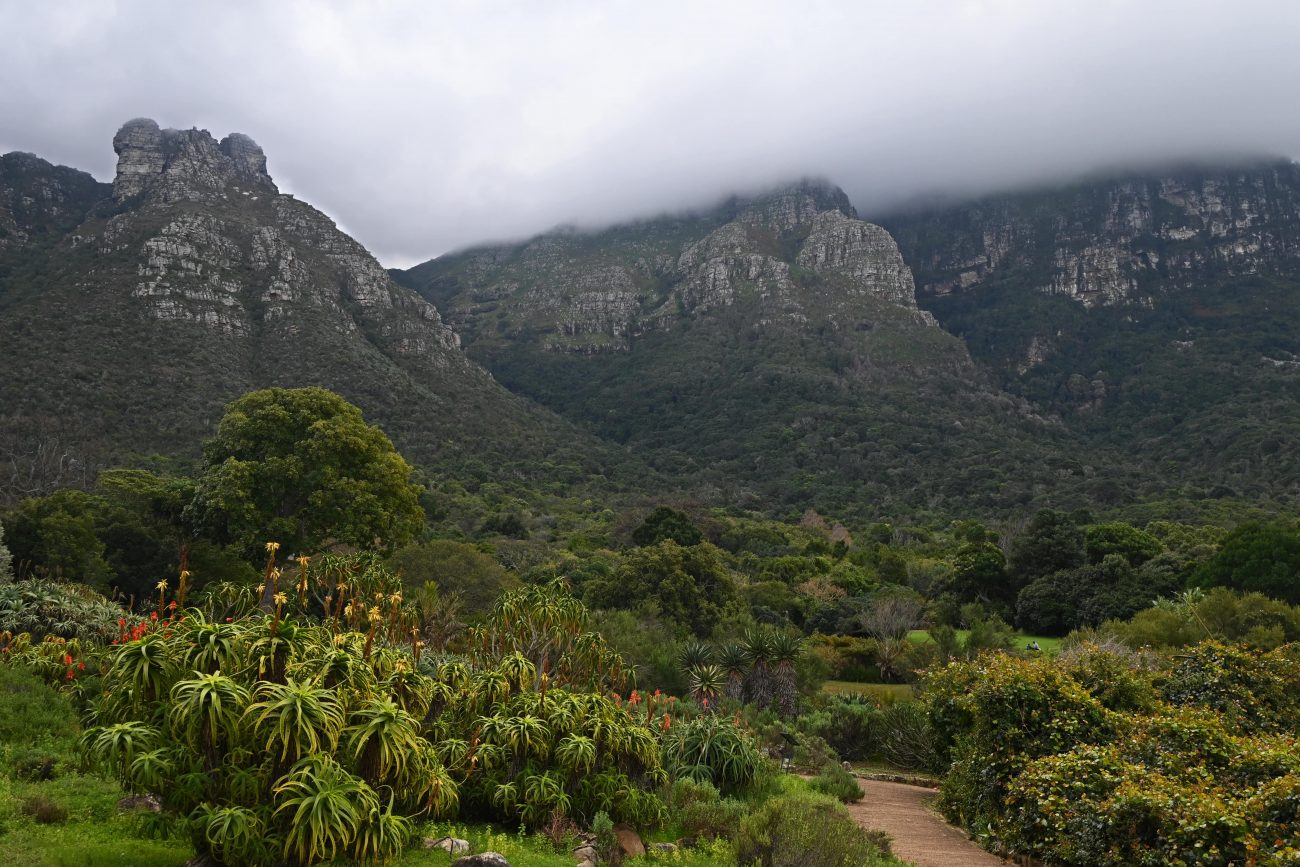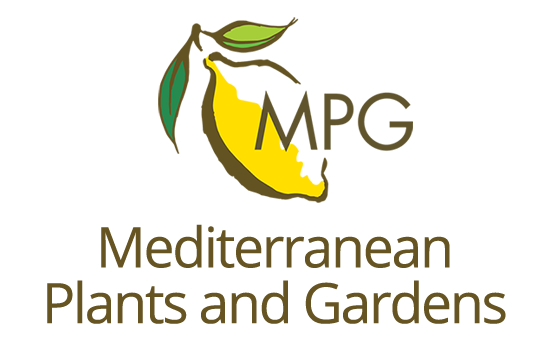Day 1 – Thursday 14 August
Cape Town and Kirstenbosch National Botanic Gardens
Our group comprised of ten members and we all travelled out together on a long and rather turbulent overnight flight. On arrival in Cape Town airport we were met by our guide for the fortnight, Frank Gaude. Originally from Germany, Frank studied a Masters degree in Social Anthropology at the University of Cape Town. More recently his primary interest is the landscapes and wildlife of South Africa and he has been working as an accredited tour and mountain guide here for twenty years.
Amongst the familiar architecture of an international airport, we were delighted to get our first glimpse of flora, with beds around the car park planted with hot coloured Chasmanthe floribunda and aloe. We also couldn’t mistake our location as Table Mountain loomed ahead of us, topped with its ‘tablecloth’ of cloud.
Our first and also final nights of our trip would be spent at Medindi Manor guest house. Located in the southern suburbs of the city in an area called Rosebank, the pretty pink-painted building dating to the 1890s was surrounded by lush gardens.

Medindi Manor
It was now the middle of the day, the sun was shining and after a quick stop in our rooms we travelled through the busy city roads to the famous Kirstenbosch National Botanic Gardens. The gardens occupy a stunning location, on the eastern slopes of Table Mountain. Kirstenbosch and the suburb of Newlands are in the lee of the tallest point of Table Mountain and have the highest rainfall on the Cape Peninsula, an average of 1310 mm of rain per year. The garden focuses on flora native to South Africa, the gardens merging into planted forest on the foothills of Table Mountain.
Frank took us on a tour to look at plants that originate in different biomes. We started in the Botanical Society Conservatory, which provides an environment suitable for growing plants from drier regions. This included the Welwitschia, which need well-drained, mineral rich desert sand.

Kirstenbosch Botanic Gardens

Welwitschi
Outside, in the thicket vegetation area we saw aloes, succulents and Strelitzia juncea, with narrow leaves that are round in cross section with a spiny tip. In a nearby wood was Clivia miniata, familiar as house plants but which originate in forests of KwaZulu-Natal, the Eastern Cape, Mpumalanga and Eswatini. These long-lived, evergreen plants grow in dappled shade in humus-rich, well-drained soil. Wild populations are declining due to collection of roots for traditional medicine, plants and seeds for horticultural interest and habitat loss due to commercial forestry, agriculture and urban development. We also saw huge clumps of Strelizia nicolai, with grey-green banana-like leaves and white and blue flowers. It is also sold as a house plant but which outdoors grows to a giant twelve metres tall.

Strelitzia juncea
On the open hillside was the area planted with plants from the Proteaceae family. The national flower, Protea cynaroides, the King Protea, bears the largest flower head in the genus. Another area was planted with Buchu (Agathosma betulina, A. crenulata and A. ovata), shrubs which have long been used for traditional medicines and also in modern flavour and fragrance industries. One ravine looked rather prehistoric, home to rare and ancient cycads which are protected from theft by motion sensors and micro-chips.

Protea cynaroides

Area planted with Buchu shrubs

Cycads (Encephalartos) and Strelitzia nicolai on the far right
Other interesting plants included Mimetes splendidus, the splendid pagoda, which is now rare and endangered due to habitat loss and invasive alien plants. Aloidedron barberae, the tree aloe originates from moist, tropical areas in South Africa and Mozambique and is the largest aloe-like plant in Africa. Gardenia thunbergia, the wild gardenia has large round seedpods which are eaten and dispersed by elephants, buffalo and large antelope. The pods are hard and fibrous and the coat tough which protects the fruit from the animals’ gut.

Mimetes splendidus

Aloidendron barberae

Gardenia thunbergia
Although the focus was on plants we saw a large number of birds including hadada ibis, helmeted guineafowl, cape spur fowl, malachite sunbird, cape canary, African dusky flycatcher and cape batis. Many birds are important pollinators, such as sunbirds which are attracted to red, orange and yellow flowers.

Spotted eagle owl

Southern double collared sunbird

